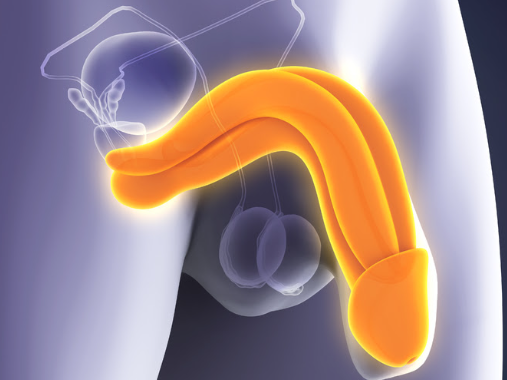Index
Introduction
The human body, in its boundless complexity, occasionally displays signs and symptoms that, although not common, must be taken seriously. One such sign is discharge in men, also known as urethritis. Though less common than in women, male discharge is a symptom that should not be ignored, primarily due to its frequent association with sexually transmitted infections (STIs).
What is Discharge in Men
Discharge in men refers to any abnormal secretion coming from the urethra. Often, this discharge is accompanied by other symptoms, such as pain when urinating, itching, and redness at the tip of the penis. It can be clear, whitish, yellowish, greenish, or even have traces of blood, depending on the underlying cause. It’s important to note that the discharge is not a condition in itself but a symptom of an underlying condition that requires medical attention.
Less Common, But Important
Many men might think that urethral discharge is a problem exclusive to women. While it’s true that vaginal discharge is more common due to the anatomy and microbial environment of the vagina, discharge in men is not as rare as one might think. According to the US Centers for Disease Control and Prevention (CDC), a significant number of men will experience urethral discharge at some point in their lives, often as a result of an STI.
When to Seek Medical Help
Discharge in men is, most of the time, an indicator that something is not right in the urinary or reproductive tract. Therefore, if you or someone you know is experiencing this symptom, it’s crucial to seek medical attention immediately. Early treatment can help avoid severe and even permanent complications, such as damage to the urinary tract, infertility, and an increased risk of contracting other STIs.
Understanding the Context
The aim of this discussion is not to cause fear or shame but to inform. Health is a fundamental human right, and information is a valuable tool in maintaining health. Hence, in this article, we will delve into the causes, symptoms, and treatments for discharge in men, with the aim to demystify this symptom and ensure you are equipped to make informed decisions about your health.
Why This Article is Important
Information is the first line of defense when it comes to our health. That’s why I wrote this article so that men of all ages can better understand urethral discharge, recognize its symptoms, and seek medical help when necessary. Moreover, it’s essential to demystify and remove the stigma associated with discharge in men. There’s nothing to be ashamed of, and seeking medical help is a sign of responsibility towards one’s own health and the health of others.
In the following sections, we will delve deep into the topic of discharge in men. We’ll explore possible causes, associated symptoms, how diagnosis is made, and available treatments. So, if you’re reading this and are concerned about possibly having urethral discharge, or simply wish to learn more about the subject, keep reading.
What is Discharge in Men
Discharge in men, or male urethral discharge, is a clinical symptom involving the release of any fluid from the urethra other than urine. The urethra is the canal that carries urine from the bladder out of the body. This discharge can vary in color, consistency, volume, and odor, depending on the underlying condition.
Characteristics of the Discharge
The discharge can exhibit various characteristics that may be useful for a doctor during diagnosis. It can be clear, white, yellowish, greenish, or even have a reddish tint if it contains blood. The volume can also differ, sometimes only noticeable when cleaning the urethra after urinating or during ejaculation, while at other times it can be more abundant. A foul odor can also be a sign of infection.
How It Presents Itself
Urethral discharge is often accompanied by other symptoms. The most common include pain or burning during urination, frequent urination, itching or irritation in the urethra, and pain during sexual intercourse or ejaculation. These symptoms can indicate that the discharge is a symptom of an underlying condition that requires treatment.
Possible Causes of Discharge
There are several conditions that can cause discharge in men. Often, it’s a sign of a sexually transmitted infection (STI), such as gonorrhea or chlamydia. It can also be caused by a urinary tract infection (UTI), prostatitis (inflammation of the prostate), balanitis (inflammation of the foreskin and head of the penis), or dermatological conditions that affect the skin of the penis.
Sexually Transmitted Infections (STIs)
STIs are one of the most common causes of urethral discharge in men. According to the World Health Organization, over 1 million people are infected with STIs every day around the world. Gonorrhea and chlamydia are the STIs most commonly associated with urethral discharge. Both can cause a purulent discharge (pus) that can be white, yellow, or green.
Urinary Tract Infections and Prostatitis
While less common in men, UTIs can also lead to discharge. Prostatitis, a condition characterized by inflammation of the prostate, can also result in discharge, along with pelvic pain and difficulty urinating.
Balanitis
Balanitis is an inflammation of the head of the penis and the foreskin that can be caused by a variety of factors, including fungal and bacterial infections, and skin irritations. In addition to discharge, balanitis can cause redness, swelling, and pain in the head of the penis.
Dermatological Conditions
Skin conditions like psoriasis and eczema, which can affect the skin of the penis, can also lead to discharge. This is often associated with symptoms such as itching, redness, and skin flaking.
Understanding what discharge in men is and its possible causes is crucial in recognizing the need for medical help. However, it’s essential to remember that only a healthcare professional can diagnose the cause of the discharge and prescribe the appropriate treatment. Therefore, if you’re experiencing this symptom, seek medical attention immediately. In the following sections, we’ll explore the symptoms associated with discharge in men and how diagnosis is made.
Causes of Discharge in Men
Although urethral discharge in men can be uncomfortable and concerning, it is a common symptom of several conditions. The most frequent causes are sexually transmitted infections (STIs), but there are a variety of other health problems that can result in discharge.
Sexually Transmitted Infections
STIs are the most common cause of discharge in men. Among the STIs that can cause this symptom are:
- Gonorrhea
Gonorrhea is a bacterial infection transmitted through unprotected sexual intercourse. Urethral discharge caused by gonorrhea is typically thick and has a yellow or green color.
- Chlamydia
Chlamydia is another common bacterial STI. Like gonorrhea, it can result in urethral discharge, which is generally clear but can be cloudy or yellowish.
- Trichomoniasis
Trichomoniasis is an STI caused by a parasite. It can lead to urethral discharge, although it more commonly causes itching and irritation in the genital area.
Urethritis
Urethritis is an inflammation of the urethra that can be caused by a bacterial or viral infection. In addition to urethral discharge, urethritis can cause symptoms like pain and burning during urination.
Balanitis
Balanitis is an inflammation of the head of the penis and the foreskin, which can be caused by a bacterial or fungal infection, allergies, or chronic irritation. Besides discharge, balanitis can cause redness and swelling of the head of the penis.
Prostatitis
Prostatitis is an inflammation of the prostate, usually caused by a bacterial infection. It can result in urethral discharge, along with symptoms such as pain and discomfort in the pelvic region, frequent urination, and difficulty urinating.
Urinary Tract Infections
Urinary tract infections (UTIs) are less common in men but can occur, especially in older men. When present, they can cause urethral discharge, along with symptoms like pain and burning during urination and a frequent need to urinate.
Dermatological Conditions
Skin conditions like psoriasis and eczema, which can affect the skin of the penis, can also lead to discharge. This is often associated with symptoms such as itching, redness, and skin flaking.
The exact cause of discharge in an individual can only be determined by a healthcare professional. Therefore, if you’re experiencing this symptom, it’s crucial to seek medical assistance immediately. In the next section, we will discuss the symptoms that may accompany discharge in men.
Associated Symptoms
In addition to urethral discharge, there are several other symptoms that may accompany this condition, depending on the underlying cause. Recognizing these symptoms can help identify the need for medical attention and assist in diagnosis.
Urinary Symptoms
One of the most common symptoms associated with discharge in men is urinary discomfort. This can include:
- Burning or Pain During Urination
This sensation is known as dysuria. It’s a common symptom in many conditions that cause discharge in men, including STIs, UTIs, and prostatitis.
- Increased Urinary Frequency
Some conditions that cause discharge, such as UTIs and prostatitis, may make you feel the need to urinate more frequently than usual.
- Hematuria
Hematuria is the presence of blood in the urine. It can occur in some conditions that cause discharge, including severe STIs and UTIs.
Genital Symptoms
Besides urinary symptoms, discharge in men can also be accompanied by various genital symptoms, such as:
- Itching or Genital Irritation
Itching or irritation in the genital area can be a symptom of several conditions that cause discharge, including STIs and skin conditions.
- Redness or Swelling
Redness or swelling in the genital area, particularly around the opening of the urethra, can occur in conditions like balanitis.
- Pain or Sexual Discomfort
Pain during sexual intercourse or ejaculation can be a symptom of various conditions that cause discharge, including STIs and prostatitis.
General Symptoms
In some cases, conditions that cause discharge in men can lead to general symptoms, such as:
- Fever
A fever may be a sign that the body is fighting off an infection, such as a UTI or an STI.
- Malaise
General discomfort, such as fatigue or weakness, can accompany more severe conditions that cause discharge.
Recognizing these associated symptoms is crucial for seeking appropriate medical help. However, professional evaluation is essential to determine the exact cause and appropriate treatment. In the next section, we will discuss how the diagnosis of discharge in men is made.
How the Diagnosis is Made
Determining the cause of discharge in men is a process that involves several steps. It’s crucial to correctly identify the cause to ensure that the treatment is both effective and safe. Here’s a look at how the diagnosis is carried out:
Evaluation of Patient History
One of the first things a doctor will do when assessing a man with discharge is to conduct a thorough review of the patient’s history. This can include:
- Sexual History
Understanding the patient’s sexual history is key to identifying potential STIs as the cause of the discharge. This might involve questions about the number of sexual partners, the use of condoms, and any symptoms experienced by partners.
- Associated Symptoms
The doctor will ask about any other symptoms the patient might be experiencing. This can help differentiate between possible causes of the discharge.
Physical Examination
The doctor will conduct a physical examination which might include:
- Genital Examination
The physical exam will typically include a check of the genitals to see signs of inflammation, redness, swelling, or any other abnormality.
- Prostate Examination
In some instances, a prostate examination might be conducted. This involves the doctor inserting a gloved and lubricated finger into the rectum to feel the prostate and check for any abnormalities.
Laboratory Tests
Based on the patient history evaluation and the physical exam, the doctor might request several laboratory tests to assist in diagnosis. These might include:
- Urethral Discharge Culture
The doctor might collect a sample of the urethral discharge to send to a laboratory. This can help identify the presence of bacteria or other pathogens.
- Urine Test
A urine test might be conducted to check for urinary tract infections or other abnormalities.
- STI Tests
If an STI is suspected, the doctor might order specific tests for diseases like chlamydia, gonorrhea, trichomoniasis, among others.
The correct diagnosis is crucial to ensure the treatment is effective and safe. Therefore, it’s essential to seek medical assistance if you’re experiencing urethral discharge. In the next section, we will discuss the available treatments for discharge in men.
Treatment for Male Discharge
The treatment for discharge in men varies widely and depends on the underlying cause. An accurate diagnosis is essential to determine the best course of treatment. Here are some of the most common treatment options:
Antibiotics
If the discharge is caused by a bacterial infection, such as an STI or a urinary tract infection, antibiotics will typically be the first-line treatment.
- For Sexually Transmitted Infections
In the case of STIs like chlamydia or gonorrhea, antibiotics can eradicate the infection. It’s important to note that sexual partners will also need to be treated to prevent reinfection.
- For Urinary Tract Infections
UTIs are often caused by bacteria and are commonly treated with antibiotics. The type of antibiotic and the duration of treatment vary depending on the causative bacteria.
Antifungals
If the discharge is caused by a fungal infection, such as candidiasis, an antifungal medication may be prescribed.
Anti-inflammatories
In some cases, anti-inflammatory drugs may be used to reduce swelling and pain. This can be particularly useful in cases of prostatitis or balanitis.
Lifestyle Changes
In some situations, lifestyle modifications might be part of the treatment. This can include:
- Personal Hygiene
Maintaining good genital hygiene is crucial for preventing and treating many of the conditions that cause discharge in men. This might involve regularly cleaning the genital area and drying it thoroughly before putting on clothes.
- Dietary Changes
In some cases, like with prostatitis, changes in the diet can help reduce symptoms. This might include avoiding irritant foods, such as alcohol and caffeine.
- Use of Condoms
Using condoms during sexual intercourse can help prevent the spread of STIs, which are a common cause of discharge in men.
It’s essential to remember that self-medication can be dangerous and ineffective. If you’re experiencing urethral discharge, it’s crucial to seek medical care for an accurate diagnosis and appropriate treatment. In the next segment, we will discuss the importance of preventing discharge in men.
Prevention of Discharge in Men
While not all causes of discharge in men are preventable, there are several measures that can be taken to reduce the risk. Below, we discuss the main prevention strategies.
Safe Sex Practices
- Use of Condoms
Using condoms during sexual intercourse is a crucial preventive measure. Condoms protect against many STIs, which are a common cause of urethral discharge in men.
- Regular STI Testing
Regular testing for STIs is an important part of sexual health, especially for people with multiple sexual partners. Early diagnosis can prevent complications and the spread of the disease.
Personal Hygiene
- Regular Cleaning
Keeping the genital area clean can help prevent infections. It’s important to clean the genital area daily with warm water and a mild soap.
- Appropriate Underwear
Wearing underwear that allows for breathability, like cotton, can help keep the genital area dry and reduce the risk of infections.
Diabetes Control
People with diabetes have a higher risk of infections, including those that cause discharge in men. Managing diabetes through a proper diet, regular exercise, and medications, if necessary, can help reduce this risk.
Care for Urinary Tract Health
Drinking plenty of water and urinating regularly can help maintain a healthy urinary tract and prevent infections. Additionally, avoiding holding in urine for extended periods can help prevent urinary tract infections.
Despite the best precautions, discharge in men can still occur. If you notice any urethral discharge, it’s essential to seek medical care for an accurate diagnosis and appropriate treatment. In the next segment, we will discuss when to seek medical help and how to prepare for the consultation.
Conclusion
In this article, we delved deeply into the issue of discharge in men, a condition that, while less common than in women, still warrants serious attention. From identifying symptoms to seeking treatment, we understand that education and awareness are crucial for the effective management of this condition.
Summary of Key Points
- What is Discharge in Men
Urethral discharge in men is a symptom that can be caused by a variety of conditions, including STIs, urethritis, and balanitis. It’s vital to recognize that any sign of discharge requires immediate medical attention.
- Associated Causes and Symptoms
There are several possible causes for discharge in men, with STIs being one of the most common. Other symptoms, such as pain, discomfort, redness, and swelling, often accompany the discharge and are a sign that something is amiss.
- Diagnosis and Treatment
Diagnosis involves a combination of physical examinations, patient history, and laboratory tests. Once the cause is determined, treatment can include antibiotics, anti-inflammatories, and dietary changes.
- Prevention
While not all causes of discharge in men can be prevented, measures like safe sex practices, proper personal hygiene, and diabetes control can significantly reduce the risk.
Importance of Seeking Medical Help
Understanding that discharge in men is a sign of an underlying condition requiring medical attention is the first step towards effective management. Negligence or self-medication can lead to severe complications, including infertility.




